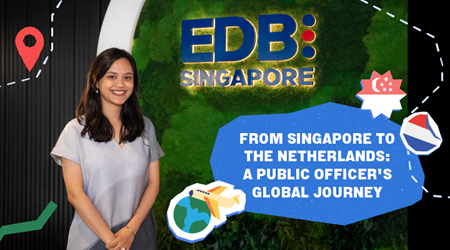Why Going Local Could Be the Tastiest Decision for Singapore’s Future

3.5-minute read
Would you shell out $1.20 for a pack of xiaobaicai from Indonesia, or nearly double that for the locally-grown version?
One stretches your wallet but travelled kilometres to get here. The other is fresher, lasts longer, has lower carbon footprint, and supports our local farmers.
Most of us do not really think twice. We grab the cheaper pack and move on. But with more than 90% of our food imported, every bite matters more than you think. Global food supply disruptions (flashback to COVID-19 times) can send shockwaves through our supermarket shelves and kitchens.
That is why local farms are not just a nice-to-have. They are actually an important part of our food security strategy, complementing other efforts like source diversification. But how do we encourage locals to support local produce when it often costs more?

A quiet revolution, starting with eateries
Enters the Farm-to-Table Recognition Programme (FTTRP).
Instead of trying to change shoppers’ habits overnight, this initiative by the Singapore Food Agency (SFA) has a different strategy. It partners with restaurants and eateries to use more locally farmed produce.
The idea is simple: when people eat out, they may be more willing to pay a little extra for meals made with local fresh ingredients. Businesses, in turn, get to appeal to diners who care about consuming fresher produce, and sustainability.

Rethinking the idea of “value” becomes essential
In Singapore’s competitive culinary scene, keeping ingredient costs low is a key strategy. So asking food businesses to buy local, especially when it may be more expensive, is not an easy sell.
This is where rethinking the idea of “value” becomes essential.
“Local produce may sometimes be priced higher because of the higher production costs in Singapore,” Cindy Chang, SFA’s Assistant Director for Industry Development and Community Partnerships explained.
“But when you look at the bigger picture — fresher ingredients that last longer, a smaller carbon footprint, and the assurance of supporting Singapore’s food resilience — it’s a worthwhile investment.”
FTTRP thus strives to encourage food businesses to adopt local produce, one step at a time.
“We understand that businesses can’t overhaul their procurement strategies overnight,” Cindy said. “That’s why FTTRP allows them to start small. As long as they source a minimum of 15 per cent of their ingredients locally in one of the six food categories*, they can qualify for the programme.”
It is not just about numbers too. Storytelling plays a powerful role in helping diners appreciate the value of local produce. Besides being fresher and more eco-friendly, they are often pesticide-free as well.
“Customers increasingly want to know where their food comes from. Being transparent about sourcing, highlighting the freshness and sustainability of local produce, and sharing the stories of the farmers behind the food — that creates a connection,” Cindy shared. “It helps justify the value of what’s on the plate.”

From farm to table
Today, more than 100 hotels, restaurants, and caterers have jumped on board FTTRP, embracing local ingredients while boosting Singapore’s food resilience.
Well-known names like PARKROYAL COLLECTION Pickering, Gardenasia, and Chilli Api Catering are part of the programme. For them, the appeal is clear.
Executive chef at PARKROYAL COLLECTION Pickering Alvin Leong was sold on the idea after visiting a local mushroom farm. “The flavour of the mushroom is really intense,” Alvin shared. “You can really differentiate the flavours. They are just harvested fresh daily and sent to your doorstep.”
To help balance costs and allow local produce to shine, Cindy pointed out that businesses could engineer their menus, “Restaurants can feature local produce in signature dishes, where freshness and quality are most noticeable.”
And it is not just about taste. Eating at an FTTRP-recognised establishment means a meal made with fresher ingredients and an easy way to support local farms.
For catering businesses, the benefits extend even further. FTTRP participants were awarded bonus points during the evaluation of their bids for the government catering contract in 2024. This is a clear signal that supporting local, sustainability, and good business can go hand in hand.
At the heart of it all is a bigger mission.
“Every business that comes on board FTTRP makes a difference,” Cindy adds. “Together, we’re building a more resilient and sustainable food system.”
This article was first published on SFA's digital publication, Food for Thought on 15 April 2025.
| Check out FTTRP-recognised dining options and learn more about the FTTRP here. Together, we can secure Singapore’s food future—one delicious meal at a time. |
*Hen shell eggs, leafy vegetables, beansprouts, fish, mushrooms, quail eggs
- POSTED ON
Nov 6, 2025









